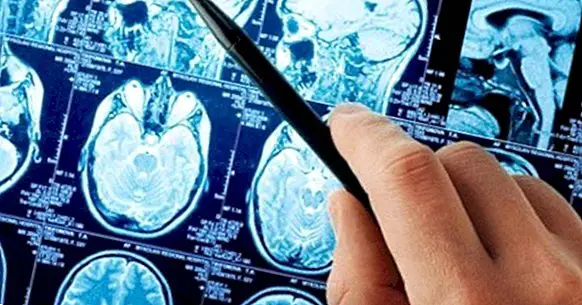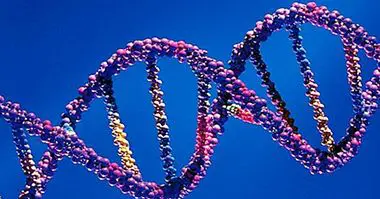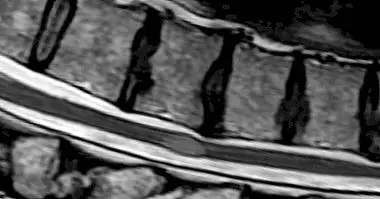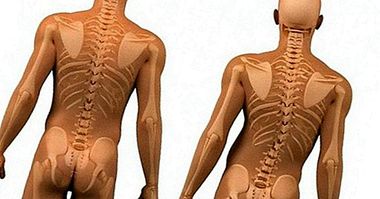Cerebral aneurysm: causes, symptoms and prognosis
The Central Nervous System, in which the encephalon is included, is an indispensable component of our anatomy.
Without it we could not survive, but we could not think, feel, make decisions or be aware of what happens to us; all the characteristics that make us human exist because we have a brain that works as it should.
However, there are many diseases that can jeopardize its functioning and, therefore, our survival. The cerebral aneurysm is one of them .
What is a cerebral aneurysm?
A cerebral aneurysm is a cerebrovascular disease in which a part of a blood vessel in the brain dilates , which swells with the passage of time.
This bulging of this segment of the blood vessel is due to a weakening of the blood vessel wall, which causes the blood pressure to tighten it further, increasing the risk of the vessel rupturing and a part of the brain flooded. in blood.
Prognosis: what happens when the aneurysm breaks?
The rupture of a cerebral aneurysm is almost always a very serious event for the health of the person, since on the one hand the leakage of blood is affecting the functioning of the parts of the brain, making them unable to work well and killing nerve cells, and on the other it produces a deficit of blood supply in others, causing them to die.
Beyond these generalities, the prognosis of a ruptured cerebral aneurysm is very variable , depending basically on its size, the affected brain area, the general health status of the person and the time that has elapsed between the rupture of the vessel and the beginning of medical care. In general, an average of 40% of people do not survive 24 hours after the rupture of the cerebral aneurysm, and it is common that in cases of recovery there are some type of sequelae. That is why urgent medical attention is necessary before the appearance of the first symptoms.

Types of cerebral aneurysms
The aneurysms that affect the brain can be classified according to several criteria. Here are some of them.
Types of aneurysms by size
- Very small : 3 mm. or less
- Little ones : more than 3 mm. and less than 11 mm.
- Big : from 11 to 25 mm.
- Giants : more than 25 mm.
Types of aneurysms according to their shape
- Saccular aneurysms : Bulging bulges in the wall of the vessel.
- Dissecting aneurysms : the inner layer of the vessel wall breaks creating a bifurcation that separates the normal path of the vessel and another that runs parallel to it on the other side of the inner wall.
- Fusiform aneurysms : in this type of aneurysm there is no specific and well-defined area in which the wall of the vessel inflates, but the vessel wall expands in all directions along a relatively long segment of it.
Causes and risk factors
Brain aneurysms can be the product of alterations of genetic roots or acquired diseases . The risk factors related to unhealthy lifestyle habits are alcoholism, excessive intake of foods with high levels of fats and sugars, tobacco abuse, cocaine use, and the use of certain contraceptives and anticoagulants.
Hypertension, obesity and, especially, atherosclerosis are also risk factors for the possible appearance of cerebral aneurysms, which are associated with the weakening of blood vessel walls.
Symptoms of cerebral aneurysm
When they are small, brain aneurysms tend to produce no symptoms until they are broken, although larger ones can alter certain mental and behavioral functions before they occur by pressing adjacent areas as they expand.
Symptoms before the break
Among the most frequent symptoms of aneurysms that have not ruptured are the dizziness, alterations in perception, loss of vision and balance and, in general, a weakening of some psychological functions.
However, these symptoms can be confused with the effects of lack of sleep or fatigue and stress produced by a too intense workday, so that often go unnoticed until the blood vessel breaks and the hemorrhage.
Symptoms immediately after the rupture
The person who has had a brain aneurysm ruptured will experience symptoms immediately, feeling suddenly much weaker and, in some cases, suffering serious disturbances of consciousness that can be accompanied by an entry into a coma or sudden death.Normally, if you do not lose consciousness, the most common signs that an aneurysm has occurred is tiredness, severe dizziness, blurred vision and difficulty in focusing attention on something.
It is also common to experience speech problems (aphasias), alterations of perception and entry into a state of confusion. However, as we have seen, these symptoms depend on many factors, just like the prognosis.
Treatment
The treatment of cerebral aneurysms is always carried out by a medical team that intervenes directly on the affected area, so that it depends in large part on the area of the brain or the meninges that has been affected.
In any case, when cutting the bleeding l The most commonly used techniques are the clipping of the weakened area of the blood vessel wall , causing it to stop being exposed to blood pressure, and the use of various techniques to redirect the leakage of blood into the bloodstream.



















